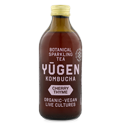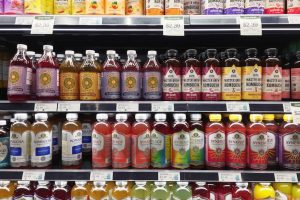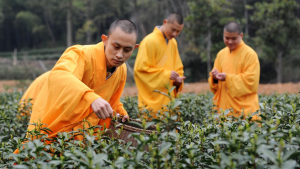
Tea has been around for almost 5,000 years. Since tea leaves were first infused in China thousands of years ago, it's delighted us with its range of

What is tea?
You may know that tea comes from a plant, but did you know that the plant is called Camellia Sinensis? Teas made using the leaves of this plant are known as 'true teas'. There are two major varieties of the tea plant, Camellia sinensis var. Sinensis and Camellia sinensis var. Assamica. All of the major varieties of true teas, such as white, green, oolong and black tea, are made with one or the other. The processes to attain varying levels of oxidation of the tea leaves determine which tea is made.

Types of Tea
There are three main types of tea. First is 'true tea' or infusions made only from the leaves of the Camellia sinensis plant. Second are 'herbal teas' (or herbal tisanes), made by infusing spices, herbs, flowers, twigs
Today we focus on traditional true teas. There are five of those: white tea, green tea, oolong tea, black tea, and pu-erh tea. Even though these teas come from the leaves of the same tea plant, they differ wildly in flavour, aroma, and appearance. White tea is delicate and airy while black tea is intensely pungent and bold. How can these teas vary so much when they come from the same leaves? The answer lies in the production process.
Some true teas like oolong and black tea are oxidized. This process exposes enzymes in the tea leaves to oxygen, which results in a darkening of the leaves. Other true teas such as white tea and green tea are prevented from oxidizing. This results in a milder, more natural and earthy flavor. Pu'er or pu-erh is a variety of fermented tea produced in the Yunnan province of China. Fermentation in the context of tea production involves microbial fermentation and oxidation of the tea leaves, after they have been dried and rolled. Pu-erh tea leaves are typically aged anywhere from 10 to 15 years. The highest quality aged pu-erh teas can be aged for up to 50 years.
Most kombucha is made with green or black tea. Yugen combines both teas to get the flavour and benefits of both.
History of tea
The story of tea begins like most things do, as part of a mystical legend. In 2737 B.C., the Chinese emperor Shen Nong discovered tea on accident. According to ancient tales, stray tea leaves drifted into the emperor's boiling pot of water. And so began a centuries-long love affair with tea.
After its popularity soared in China, it was only natural that tea would make its mark outside the country's borders as well. Visiting monks from Japan, including the famous Saichō, brought tea seeds back from China to Japan during the early 9th century. However, it would take more than 300 years before tea plantations became large enough to attract a true following in Japan. The most popular method of preparing tea involved grinding the delicate green tea leaves into a fine powder using a stone mill. This powder, called Matcha in Japan, was a precursor to the traditional Japanese tea ceremony ('Chanoyu'), and it was popularized by the Zen monk Eisai.
Because tea became popular in ancient China and Japan, it only makes sense that kombucha also originated in this part of the world. One legend tells the story of the Korean doctor 'Komu-ha' who was sent to cure the Japanese emperor Inyoko with the fermented tea. There are stories mentioning that the samurai would drink kombucha for longevity and wellbeing.

To your good health
Tea often pops up in lists of the top 10 healthiest beverages. Tea contains a variety of chemicals and compounds that contribute to its flavour profile and health benefits. Many scientific studies prove those health benefits.* The main compounds in tea are polyphenols and catechins, both a type of antioxidants.
Polyphenols make up about 30 percent of the weight of dry tea leaves. Most of these polyphenols are flavonoids and tannins, which the plant produces to fend off disease.
Tannins are also responsible for the flavor profiles of teas. Flavonoids contain antioxidants such as EGCG, which have been credited with multiple health benefits. These antioxidants work to eliminate free radicals that can cause oxidative stress, the body's version of rust. This helps to prevent premature aging as well as serious neurological diseases.
The chemical composition of tea differs depending on the type of tea and how it is produced. Teas that are minimally processed, white tea and green tea, tend to have similar amounts of polyphenols as fresh leaves. Teas that undergo oxidation, oolong tea, black tea, and
Catechins are compounds that can help regulate blood pressure, increase weight loss, and protect the brain from disease. Some of these compounds, including one of the most potent, are found exclusively in tea. Tea catechins are increasingly associated with lowering risk of serious diseases including heart disease and neurological disorders.
How is it made?
Tea is cultivated in dozens of countries across the globe. The main producers of tea include China, India, Sri Lanka, and Kenya. In fact, China and India were responsible for more than 60 percent of the world's tea production. India is the largest producer of black tea while China and Japan are the largest producers of green tea.

Tea leaves are not harvested from plants until the plants reach at least three years of age. Tea leaves are still harvested by hand, as machines damage the leaves too much, leading to low quality tea. Harvests can occur anywhere from once to several times per year depending on the tea type. Harvests are called flushes, which refers to the growth of new tea leaves. The first flush occurs each spring while the final flush usually takes place in late autumn.
Tea harvesters hand pick the tea leaves and place them in large wicker baskets. Once the baskets are full, the leaves are taken to an on-site processing facility. Here the leaves are withered, oxidized, and dried depending on what type of tea is being produced.

So now that you know a thing or two about tea, it's time to brew a fresh cup, sit back, relax and enjoy all of the wonders this beverage has to offer, cheers!
Or do you want to discover more about our kombuchas?
 I like Yugen Kombucha
I like Yugen Kombucha
 J'adore Yugen Kombucha
J'adore Yugen Kombucha






